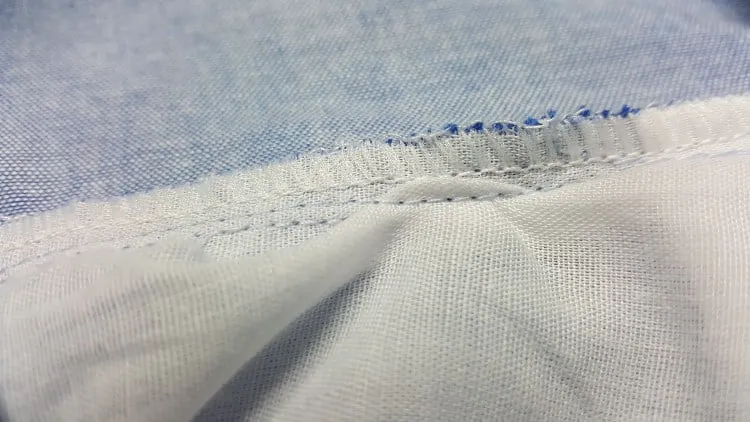Singer Sewing Machine Sewing Problems: Troubleshooting & Fixes
Sewing Machine Troubles? Common Singer Issues & Solutions
Sewing Machine Troubles? Common Singer Issues & Solutions
Singer Foot Pedal Not Working
This may be a case where the wires inside the foot pedal are frayed, broken, or loose. Now if you know a thing or two about electronics and wiring, then this should be an easy fix for you to get done.
Or you can avoid the extra work and simply buy a new foot pedal and connect it to your sewing machine. There may be something wrong with the machine that is causing the foot pedal to stop working. In this case and in the case of rewiring the foot pedal, you should see a qualified repairman and let him look at it.
It may be that no power is getting to the foot pedal and you need an expert to determine why that is so. This is a good move to make if you are not comfortable with rewiring the device.
Another place to look before going to the repair shop is the clutch. You may have forgotten to disengage the clutch when you placed the bobbin inside the bobbin case. Always check the simple things first. They are the easiest and cheapest fix around.
Preventing Singer Sewing Machine Problems
Regular Maintenance
One of the most important things you can do to prevent Singer sewing machine problems is to perform regular maintenance on your machine. This includes cleaning, oiling, and replacing worn or damaged parts. Refer to your machine’s user manual for specific instructions on how to perform maintenance on your machine.
Regularly cleaning your machine will help prevent dust and debris from building up and causing problems with the machine’s performance. Use a soft brush to remove any lint or dust from the machine’s exterior and interior. You can also use a can of compressed air to blow out any debris from the machine’s crevices.
Oil your machine regularly to ensure smooth operation. Refer to your user manual for instructions on where and how to oil your machine. Be sure to use the correct type of oil recommended for your machine.
Proper Use of the Machine
Another important factor in preventing Singer sewing machine problems is to use the machine properly.
This includes using the correct needle for the fabric you are sewing, using the correct thread tension, and using the correct stitch length and width.
Always use the correct needle for the fabric you are sewing.
Using the wrong needle can cause:
- skipped stitches,
- broken needles,
- and other problems.
Refer to your machine’s user manual for guidance on which needle to use for different fabrics.
Make sure you are using the correct thread tension for the fabric you are sewing. Adjust the tension as needed to ensure even stitches that are neither too loose nor too tight. Refer to your machine’s user manual for instructions on how to adjust the thread tension.
Finally, make sure you are using the correct stitch length and width for the fabric you are sewing. Adjust the stitch length and width as needed to ensure the best results.
Refer to your machine’s user manual for guidance on which stitch length and width to use for different fabrics and projects.
Singer Bobbin Case Loose
One of the difficulties in discerning this problem is that often it is not the bobbin case that is loose. Sometimes it is the bottom plate that has come loose due to a variety of reasons. So check that first and save your self some energy and time.
If the bottom plate is tight, then your next step is to check the bobbin case. If it is actually loose, you need to check the location of the hinged latch lock. If they are not in their right spot this may be the problem.
Turn your handwheel until the needle is all the way up and pull on the hinged tap until the bobbin case comes out. Next re-install the bobbin case and make sure you hear that click. Once you do then the case should be in place and not loose.
Singer Sewing Machine Error Codes
Many computerized Singer sewing machines will display an error code on the LED or touchscreen when things go wrong. The machine will often make a beeping noise and refuse to operate until you address the issue.
If you know how to find out what the error code means, you will quickly diagnose problems. For example, on some models, “C4” indicates a problem with the bobbin thread. Knowing what this code means allows you to quickly remove the bobbin and resolve the issue without aimlessly poking about the whole machine to find out what’s wrong!
Most importantly, check your manual! Your user’s manual should provide a chart of error codes and what they mean.
If you don’t have a manual or find that it didn’t provide enough info, you can often find helpful tips for each error code discussed in online sewing forums. Many other sewers use the same Singer model you do, so they may have encountered the same issues!



Tegs:
Search
Recent Posts
-
Troubleshooting Singer Sewing Machine Problems: A Guide to Common Fixes
Apr 16 2025
-
Mastering Overlocking on Your Singer Sewing Machine: A Step-by-Step Guide
Apr 14 2025
-
Sew with Confidence: The Singer Portable Electric Sewing Machine 221
Apr 15 2025
-
Singer SE300 Legacy Embroidery Machines: The Perfect Choice for Beginners and Experts
Apr 16 2025
Subscribe to Updates
Get the latest posts and fashion insights directly in your inbox.